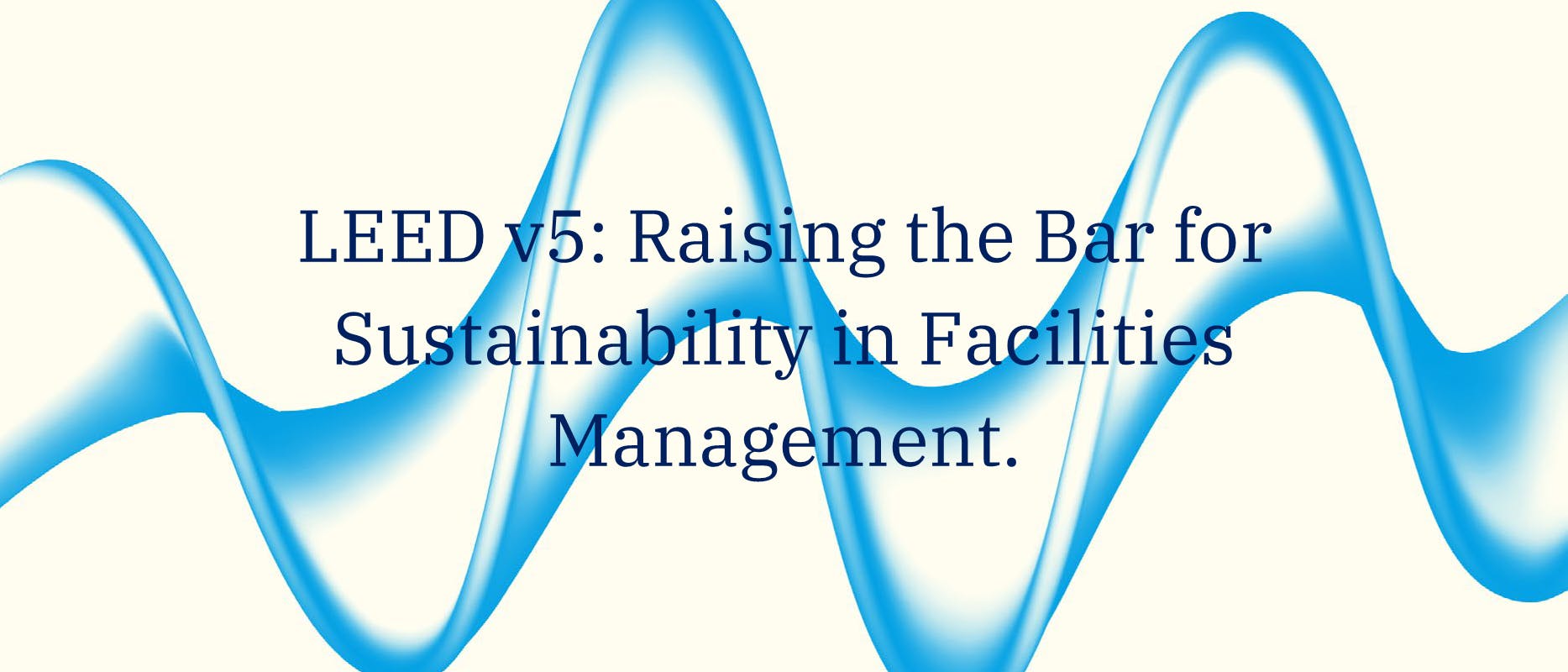
Author: Parris Ullrich, Operations Director for MENA
The latest update to the LEED (Leadership in Energy and Environmental Design) framework LEED v5 is reshaping how the FM industry approaches sustainability, performance, and resilience. For Macro and our clients, this represents both a challenge and a significant opportunity to futureproof assets, operations, and investments.
Why LEED v5? Closing the Gaps of Previous Standards
While LEED v4.1 for Operations and Maintenance (O+M) introduced a performance-based system focused on energy, water, waste, and occupant satisfaction, it left loopholes that some teams exploited, achieving certification without truly embedding long-term sustainability.
LEED v5 addresses these gaps with a more rigorous, holistic approach. It places greater emphasis on decarbonisation, resilience, and ongoing performance verification ensuring that buildings not only meet sustainability targets at a point in time but maintain them throughout their lifecycle.
Key Changes from LEED v4 to LEED v5
1. Decarbonisation
LEED v5 introduces stringent requirements for reducing emissions from all sources: operational, embodied, refrigerant, and transportation - aligning with global net-zero ambitions.
2. Quality of Life
The standard now goes beyond air quality and thermal comfort, incorporating occupant well-being, equity, and resilience into the design and operation of spaces.
3. Ecological Conservation
LEED v5 places greater importance on conservation and ecosystem restoration, limiting environmental degradation and promoting biodiversity.
4. Performance-Based Approach
Continuous monitoring and performance verification are now essential, ensuring buildings maintain high sustainability standards over time.
5. Integrative Process
The updated framework requires early-stage assessments for climate resilience, carbon impact, and human well-being - embedding sustainability from the outset.
6. Material Health and Circularity
Material choices now account for health, circularity, and zero-waste principles, promoting responsible supply chains and reducing environmental footprints.
7. Location and Transportation
Site selection and transportation connectivity requirements now integrate social equity and community benefits, with stricter criteria for public transit access.
Real-World Examples of LEED v5 in Action
The Middle East Market: Rising Expectations and New Opportunities
In the Middle East, rapid urbanisation and ambitious sustainability targets mean LEED v5 is already influencing market expectations:
Asset Value: Buildings certified to LEED v5 are seen as more future-proof and attractive to investors.
Regulatory Compliance: With regional governments aligning to global net-zero goals, LEED v5 supports compliance with new regulations.
Competitive Advantage: Early adopters of LEED v5 demonstrate leadership in sustainability, strengthening their market position.
At Macro, we’re aligning our FM operations and client services with these evolving expectations. Following the UAE’s updated commitment to net-zero by 2050 at COP29, we’re working closely with clients to implement robust governance, advanced energy management systems, and waste reduction strategies. Our approach ensures buildings remain compliant, competitive, and genuinely sustainable.
Overcoming Challenges, Unlocking Opportunities
Adapting to LEED v5 isn’t without its challenges. Higher initial costs, specialised training needs, and retrofitting older buildings all require careful planning. But the long-term benefits are clear:
· Enhanced asset value
· Improved tenant satisfaction and retention
· Stronger supply chain relationships
· Leadership in sustainability
In the Middle East, the scale of new development presents a unique opportunity to integrate LEED v5 principles from the ground up, futureproofing assets from day one.
Futureproofing Through Data, Technology, and Resilience
A defining feature of LEED v5 is its focus on continuous performance monitoring. At Macro, we’re investing in IoT, smart building technologies, and real-time data systems to ensure both our teams and clients are prepared for this shift. Ongoing performance verification not only supports compliance but also delivers long-term operational efficiencies.
Resilience remains a key pillar of our strategy, especially in a region facing climate risks like extreme heat and water scarcity. Through proactive risk assessment, adaptive materials, and comprehensive resilience planning, we’re helping clients increase asset longevity, reduce disruptions, and safeguard business continuity.
The Road Ahead: Brand, Leadership, and Evolving Expectations
As the FM industry navigates this AI-led, data-driven era, brand reputation and leadership matter more than ever. LEED v5 isn’t just a technical framework, it’s a marker of commitment to quality, sustainability, and future-readiness.
Macro’s approach ensures that our brand, operations, and partnerships reflect the highest standards, keeping pace with the evolving demands of the built environment.
Want to learn more about Macro in the Middle East? Contact us.
This article was curated in partnership with FM Middle East.